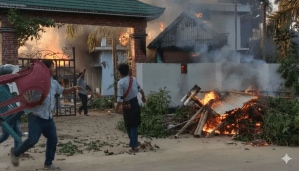Is it the end of the road for double deckers?
NOVEMBER 8: The Brihanmumbai Electrical Supply and Transport Undertaking BEST could soon be cutting its costs in half. Rising maintenan...

NOVEMBER 8: The Brihanmumbai Electrical Supply and Transport Undertaking BEST could soon be cutting its costs in half. Rising maintenance and fuel costs have forced the administration to rethink on whether it wants to continue with its ubiquitous red double deckers, which, say officials, are fast turning into white elephants.
8220;We have to weigh a fresh acquisition against the advantages, the running costs are higher for double decker buses,8221; said BEST General Manager Rahul Asthana, adding that contrary to its name, the passenger carrying load of such buses was not double.
8220;A single decker carries 70 passengers while a double decker carries 90 passengers. While we save an additional driver we have to deploy an additional conductor for an extra 20 passengers,8221; he said. A conductor earns between Rs 6,000 and 12,000, not including perquisites like overtime.
The BEST at present has about 650 double deckers in a fleet strength of 3,469 buses. The last double deckers were ordered way back in 1995 and ever since the administration has only ordered single deckers at a rate of roughly 100 buses annually as replacements.
According to Asthana, the administration had before it a fresh tender for double decker buses from manufacturer Ashok Leyland and would take a decision on it within a month.
Post-diesel hike, the running cost of a double decker was Rs 49 per kilometre, and Rs 39 per kilometre for a single decker. However, while single deckers reach the end of their lives in 15 years, the bodies of double deckers have to be replaced every eight years.
Asthana said that if the administration took a decision to halt the acquisition of new double deckers, the existing vehicles would be allowed to gradually retire without replacements.
Double deckers first hit Mumbai8217;s roads in 1937 to enable the BEST to cope better with increasing passenger loads. The fact that Mumbai8217;s transport pattern was closely modelled on the London system made them the natural choice. The buses were built on a chasis imported from England. While the single decker of those days could carry only 36 passengers, the double deckers could carry as many as 58 persons. When the BMC took over the BEST in 1961, double deckers comprised nearly 70 per cent, or nearly 700 buses in a fleet of around 1,000 buses.
But with its transport wing grappling with a deficit of over Rs 200 crore this year and a crippling diesel price hike hike delivering another blow, the administration plans to go in with its head rather than give sentiment a ear.
- 01
- 02
- 03
- 04
- 05































